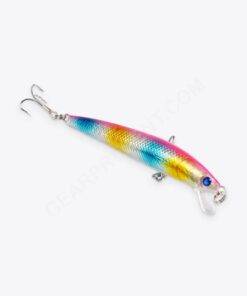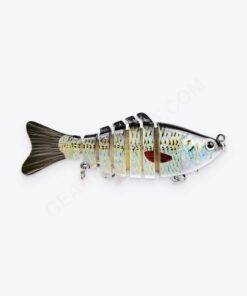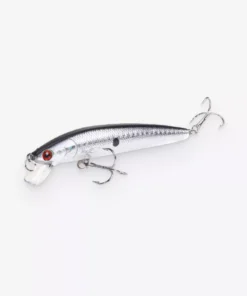Sports
The Ultimate Guide to Fishing: Tips, Techniques, and Essential Gear
Are you ready to dive into the exciting world of fishing? Whether you’re a seasoned angler looking to up your game or a curious beginner eager to cast your first line, this ultimate guide has got you covered! From must-know tips and tried-and-true techniques to essential gear recommendations, we’ve compiled everything you need to embark on unforgettable fishing adventures. So grab your rod, bait up, and get ready for an exhilarating journey through the waters – because with our comprehensive guide in hand, every cast is bound to reel in excitement!
Introduction: Why Fishing is a Popular Hobby
Fishing is an age-old activity that has been enjoyed by people of all ages and backgrounds. From the early days of fishing as a means of survival to now being considered as a recreational activity, fishing has evolved into a popular hobby for many reasons.
In this section, we will explore why fishing has become such a beloved pastime for millions of people around the world.
Fishing make our soul bonding with nature
One of the main appeals of fishing is its close connection to nature. When you are out on the water, surrounded by serene landscapes and breathtaking views, it can be easy to forget about your daily stresses and worries. The peacefulness and tranquility that comes with spending time in nature while waiting for a bite from your line can be incredibly therapeutic.
Moreover, fishing allows you to observe and interact with different species of fish and other aquatic creatures up close. This experience can be both exciting and educational, making it an excellent opportunity for families or friends to bond over their love for nature.
Relaxation and Stress Relief
Fishing is also known for its relaxation benefits. Many avid anglers find that being out on the water helps them unwind after a long day at work or relieves stress from their daily lives. The repetitive motion of casting your line, reeling in your catch, and enjoying the peace and quiet can have meditative effects on the mind and body.
The Basics of Fishing: Rods, Reels, and Lines
Fishing is a popular recreational activity that has been enjoyed by people for centuries. Whether you are a beginner or an experienced angler, having the right fishing equipment is essential to your success in catching fish. In this section, we will discuss the basics of guide to fishing and explore the different types of rods, reels, and lines that are used in this sport.
Guide to Fishing: Get Your Fishing Rods
A fishing rod is essentially a long, flexible pole used to catch fish. When choosing a rod, there are several factors to consider such as length, material, power, and action.
a. Length of a Fishing Rod:
The length of a fishing rod can vary from 4 feet to over 14 feet. The general rule is that longer rods cast farther while shorter ones provide better control over your bait or lure. As a beginner, it is recommended to start with a medium-length rod (around 6-7 feet) as it offers versatility in different fishing situations.
b. Material:
Fishing rods come in various materials such as fiberglass, graphite or carbon fiber. Fiberglass rods are durable and more affordable but tend to be heavier compared to graphite or carbon fiber rods which offer more flexibility and sensitivity.
c. Power:
Power refers to how much weight a rod can handle before it starts bending. It ranges from ultra-light for smaller fish like panfish and trout up to heavy for larger species like muskie and salmon. For beginners targeting smaller fish species, a medium power rod should suffice.
d. Action:
The action of the rod describes where along its length it bends when pressure is applied. A fast action rod bends closer to the tip, while a slow action rod bends more towards the base. For beginners, a medium or moderate-fast action rod is recommended as it offers a good balance of sensitivity and power.
Guide to Fishing: Choose Your Fishing Reels
A fishing reel is a device attached to the fishing rod that holds and retrieves the fishing line. There are three main types of reels: spin-casting, spinning, and baitcasting.
a. Spin-casting Reels:
Spin-casting reels are ideal for beginners as they are easy to use and require minimal skill. They have a closed face design with a button or trigger that releases the line when pressed. These reels are best suited for smaller fish species and lighter lines.
b. Spinning Reels:
Spinning reels are more versatile than spin-casting reels and can handle larger fish species and heavier lines. They have an open-faced design with a spool that rotates as you turn the handle to retrieve the line. These reels require some skill to operate but are still beginner-friendly.
c. Baitcasting Reels:
Baitcasting reels are preferred by experienced anglers as they offer more control and accuracy in casting. They have a revolving spool which allows for longer casts with heavier lures or baits. However , they also require more skill and practice to use effectively.
Guide to Fishing: Set Your Fishing Lines
Fishing lines are the cords or strings that connect the rod to the hook and allow you to reel in your catch. There are three main types of fishing lines: monofilament, fluorocarbon, and braided.
a. Monofilament:
Monofilament lines are made from a single strand of nylon and are the most common type of fishing line. They are affordable, easy to handle, and have some stretch which can help absorb shocks when fighting fish. However, they can be visible in water and may have less sensitivity compared to other types of lines.
b. Fluorocarbon:
Fluorocarbon lines are made from a denser material than monofilament which makes them virtually invisible to fish underwater. They also have less stretch than monofilament which offers better sensitivity and hook-setting power. However, they tend to be more expensive.
c. Braided:
Braided lines are made from several strands of material woven together and offer high strength and sensitivity. They have little to no stretch which allows for better control over your lure or bait but can make it easier for fish to detect your line. Braided lines also tend to be more expensive than monofilament
Essential Gear and Tackle: Hooks, Lures, and Bait
When it comes to fishing, having the right fishing gear and tackle is essential for a successful and enjoyable experience. The type of gear you need may vary depending on your location, target species, and personal preference. In this section, we will discuss the essential gear and tackle that every angler should have in their arsenal: hooks, lures, and bait.
Hooks are an important part of any fishing setup as they are what will ultimately catch the fish. There are various types of hooks available on the market, each designed for different fishing techniques and fish species. It is crucial to choose the right hook size and style based on your target species. For example, if you are targeting larger fish such as bass or catfish, you will need a bigger hook with a thicker gauge wire. On the other hand, for smaller fish like panfish or trout, a smaller hook would be more suitable.
Another factor to consider when choosing hooks is the type of bait or lure you will be using. Some hooks work better with live bait while others are more suited for artificial lures. For live bait fishing, circle hooks are an excellent choice as they allow for easy hook sets without injuring the baitfish. J-hooks are another popular option for both live bait and artificial lures.
Lures are artificial baits designed to mimic natural prey and attract fish through movement and color. They come in various shapes, sizes, colors, and styles that imitate different types of aquatic creatures.
Conclusion
Fishing is an enjoyable and rewarding activity that can be enjoyed by people of all ages and skill levels. With this guide to fishing – the right tips, techniques, and essential gear, anyone can become a successful angler. Whether you’re a beginner or an experienced fisherman, this guide provides valuable information to help you improve your skills and make the most out of your fishing trips. So grab your rod, pack your bag with these essentials, and get ready for some unforgettable fishing experiences!




